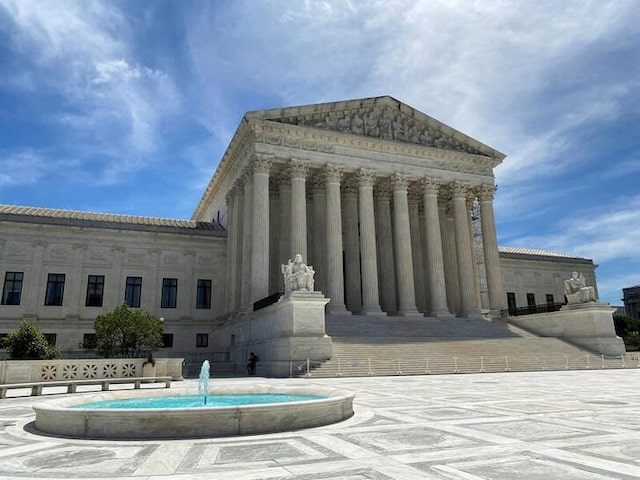On June 6, the U.S. Supreme Court unanimously ruled that insurance companies possess the right to actively participate in bankruptcy cases that could influence their financial liabilities.
This landmark decision represents a significant shift for insurers, especially those engaged in settlements involving their insured parties.
The ruling has immediate and far-reaching implications, particularly in cases like Kaiser Gypsum’s, a manufacturer notoriously linked to asbestos-containing products.
Kaiser Gypsum’s bankruptcy case, revolving around a $50 million settlement for thousands of asbestos-related lawsuits, highlighted the critical intersection of bankruptcy law and insurance obligations.
The Supreme Court’s decision underscores the necessity for insurers to have a voice in proceedings that potentially dictate substantial payouts.
By affirming insurers’ right to be involved in these cases, the Court has acknowledged the integral role insurance companies play in the financial landscape of corporate bankruptcy and settlements.
This ruling provides insurers with a platform to contest and negotiate terms and sets a precedent for future cases.
It ensures that insurance companies can safeguard their interests and challenge restructuring plans that might impose disproportionate liabilities on them. The decision is pivotal, promoting a more balanced approach to bankruptcy settlements involving significant insurance claims.
Background of the Case
The controversy erupted when Truck Insurance Exchange objected to Kaiser Gypsum’s proposed restructuring plan. This plan, central to Kaiser Gypsum’s Chapter 11 bankruptcy reorganization, aimed to address and settle thousands of asbestos-related lawsuits.
At the heart of the plan was a $50 million settlement intended to resolve these claims. However, the crux of the dispute lay in funding this settlement, which was predominantly reliant on the company’s insurance policies held with Truck Insurance Exchange.
Truck Insurance Exchange argued that the restructuring plan unfairly imposed significant liabilities on the insurer. They contended that the $50 million settlement, while aimed at resolving Kaiser Gypsum’s extensive asbestos litigation, would disproportionately burden them financially.
This objection highlighted the insurer’s concerns about being compelled to cover the substantial settlement costs, which they claimed were beyond the intended scope of their insurance policies with Kaiser Gypsum.
The challenge by Truck Insurance Exchange brought to the forefront complex issues surrounding the use of insurance funds in bankruptcy settlements. It questioned the equitable distribution of liabilities and the extent of the insurer’s financial responsibilities under existing policy agreements.
This case underscored the broader legal and financial implications of leveraging insurance assets to resolve large-scale litigation claims within the bankruptcy proceedings framework.
The dispute illuminated the tensions between corporate restructuring strategies and insurer obligations and set the stage for a critical judicial assessment of how such settlements should be equitably managed.
The resolution of this case would have significant ramifications for future bankruptcy reorganizations involving substantial insurance claims, particularly in industries plagued by widespread litigation issues like asbestos exposure.
Initially, the 4th U.S. Circuit Court of Appeals ruled that Truck Insurance Exchange lacked the standing to object to Kaiser Gypsum’s bankruptcy plan. The court argued that the settlement did not alter the insurer’s pre-bankruptcy obligations to cover asbestos liabilities, citing a doctrine of “insurance neutrality.”
However, this concept was sharply criticized and ultimately overturned by the Supreme Court. Justice Sonia Sotomayor, authoring the opinion, stated that the doctrine was “conceptually wrong and makes little practical sense,” mainly as it failed to consider how bankruptcy settlements could relieve debtors like Kaiser Gypsum of liability while leaving insurers solely responsible for claims.
Implications of the Ruling
This Supreme Court decision empowers insurers to have a “seat at the table” during bankruptcy proceedings, especially in cases involving mass tort liabilities funded through insurance, such as the high-profile bankruptcies of the Boy Scouts of America and various Catholic dioceses. Legal experts believe that allowing insurers to voice concerns will bring much-needed oversight to mass tort bankruptcies, which often rush to aggregate and settle claims without thorough vetting.
Tancred Schiavoni of O’Melveny & Myers highlighted the importance of this oversight: “When nobody is guarding the hen-house, you get a lot of foxes.” This analogy captures the potential for unchecked claim approvals without critical scrutiny from insurers, who are inherently motivated to ensure the legitimacy of claims before disbursing settlements.
Justice Sotomayor’s opinion clarified that the bankruptcy process should not overlook the significant impacts on insurers. She argued that focusing solely on the insurers’ obligations before the bankruptcy filing ignores the broader implications of reorganization plans, which can substantially alter the financial and operational dynamics between insurers and their insured. The Supreme Court’s decision underscores the need for a balanced approach that considers the rights and responsibilities of all parties involved in a bankruptcy.
Reactions and Legal Commentary
The decision has been approved by the insurance industry, with Allyson Ho of Gibson, Dunn & Crutcher, representing Truck Insurance Exchange, stating, “We’re very pleased that the Supreme Court unanimously held that insurers have a direct and obvious interest in their insured’s reorganization.”
Conversely, representatives for Kaiser Gypsum have yet to respond to requests for comment. However, legal scholars like Anthony Casey, a bankruptcy law professor at the University of Chicago Law School, suggest that while the ruling grants insurers the right to raise objections, it does not fundamentally alter the dynamics of mass tort cases. “A judge can still say, ‘I heard you, but you’re overruled,'” he noted, indicating that the practical effects might be more muted than some anticipate.
Broader Legal and Economic Impacts
The Supreme Court’s ruling could reshape the landscape of bankruptcy law by setting a precedent that ensures insurers are not unduly burdened by the financial repercussions of their insureds’ bankruptcies.
This decision affects the immediate parties and sets a legal precedent that will influence future bankruptcy cases involving insurance-funded settlements.
The U.S. Supreme Court’s decision in Truck Insurance Exchange v. Kaiser Gypsum Company Inc. has opened a new chapter in bankruptcy and insurance law.
By affirming insurers’ rights to participate in bankruptcy proceedings, the Court has reinforced the principle that all stakeholders should have a voice in significant legal and financial restructurings.
This ruling protects insurers’ financial interests and promotes a more equitable and thorough review process in bankruptcy cases. It ensures that all claims are scrutinized and validated, thereby upholding the integrity of the judicial process.










